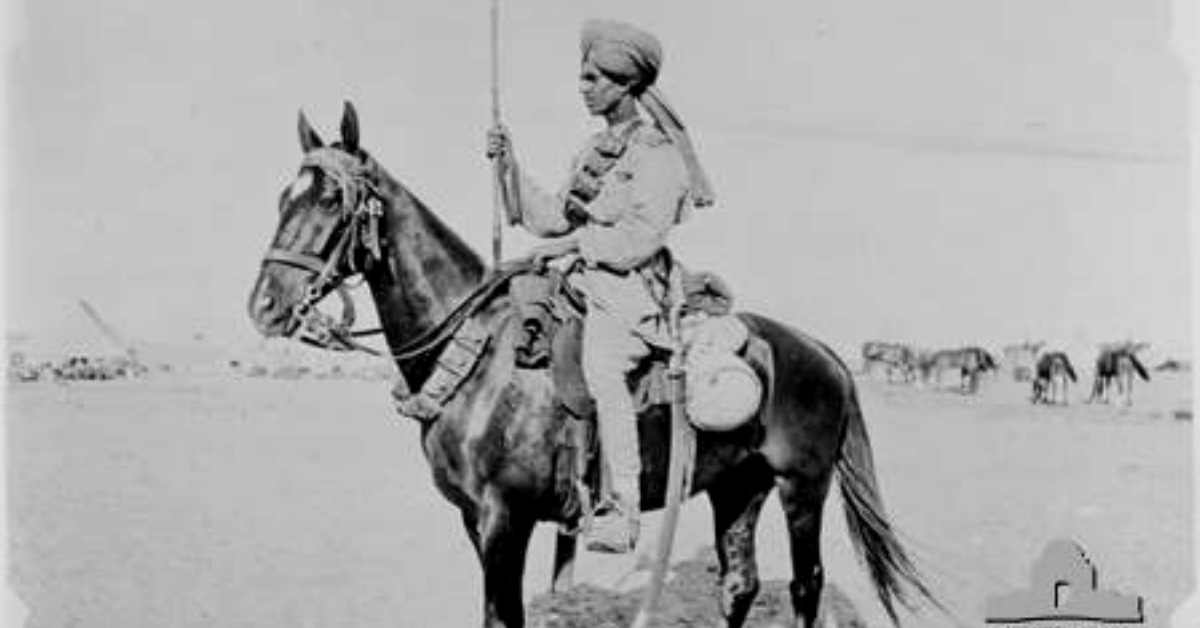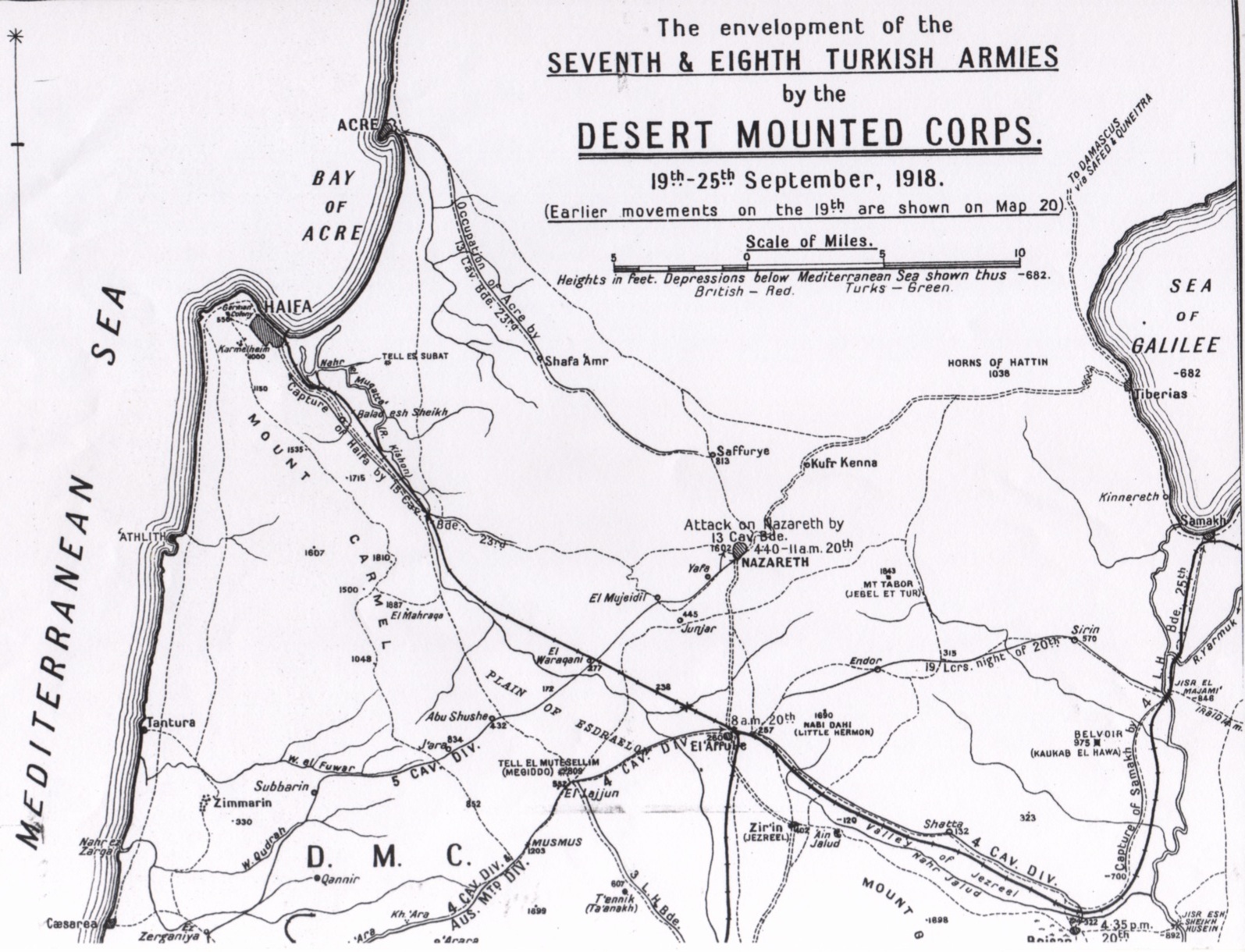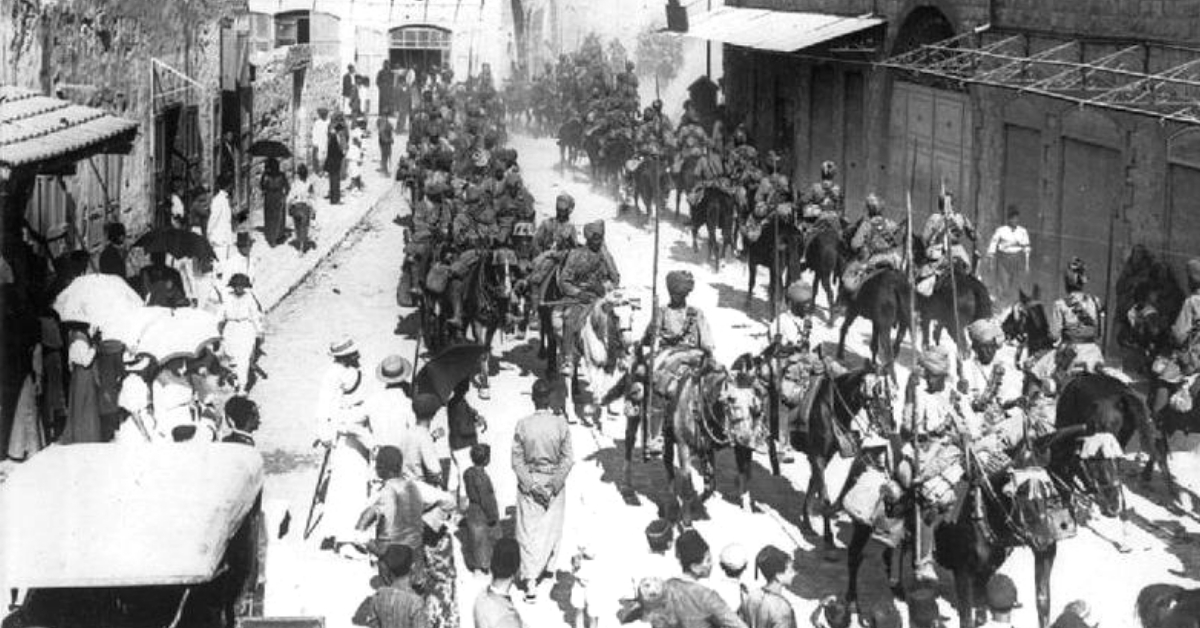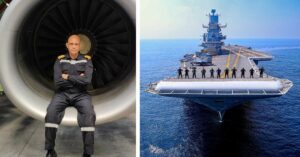Why Do Israel’s Textbooks Have Lessons on Indian Soldiers? An Amazing Tale from WW1!
"What I should like to ask is why the Indian cavalry did not get sufficient credit for what they had done. They fought the Turk, and they beat the Turk."

The city of Haifa, in Israel, holds a deep-rooted connection with India—one that it remembers and celebrates even today. On Thursday, 6 September, Haifa celebrated the centenary year of its liberation from the Ottoman rule and honoured Indian soldiers who had sacrificed their lives during the campaign.
Why did an Israeli city honour Indian soldiers, a hundred years after World War I? Here is the fascinating story behind it.
The city of Haifa was under the hold of the German-Turkish forces in 1918. World War I was at its peak at the time, and the Allied Forces and the Central Powers were trying their troops to get seize control of every strategic port, base and city to gain advantage and win the war. Haifa was one such supply base, thanks to its rail access and harbour.
The Allied Forces comprising France, Great Britain and Russia had planned to annexe Haifa, Nazareth and Damascus.

Haifa and Nazareth are in present-day Israel while Damascus is the capital of present-day Syria.
Haifa was to be annexed by the 15th Cavalry Brigade of the British Empire, which consisted of the Imperial Service Troops from the princely states of Hyderabad, Mysore, Patiala, Alwar and Jodhpur; it was initially called the Imperial Service Cavalry Brigade.
On 23rd September 1918, the Cavalry Brigade, led by lancers from Jodhpur and Mysore Lancers, as well as contingents from Bhavanagar, Baroda, Idar and Jamnagar forces attacked the German-Turkish troops and seized the city of Haifa.
The Turkish army was well-equipped with machine guns and artillery, while on the other hand, the Indian troops had only spears (or lances, hence the term, ‘lancers’) at their disposal and were not too strong in terms of the number either—400 Indian soldiers were on a battlefield against 1500 Turkish men.
However, the ‘last major cavalry campaign’ saw a miraculous display of bravery and strength at the hands of the Indian soldiers.

Even with an obvious weakness in terms of arsenal and workforce, the Indian troops were successful in seizing Haifa from the Turkish army, and although they had fought under the British Empire, the Israelis took special note of their origin and contribution.
After the battle of Haifa, the official History of the War described it saying, “No more remarkable cavalry action of its scale was fought in the whole course of the campaign… Machine gun bullets over and over again failed to stop the galloping horses even though many of them succumbed afterwards to their injuries.”
On May 21, 1919, the seventh Earl of Mayo had observed, “My Lords, there were two divisions of Indian cavalry employed in Palestine including an Imperial Service brigade. I believe I am right in saying that they were all Indian. It is well-known to the authorities at the War Office and to the military authorities that these brigades did very good work indeed. They had tremendously hard work to do, so hard indeed that they were the first troops to go into Damascus…
What I should like to ask is why the Indian cavalry did not get sufficient credit for what they had done. They fought the Turk, and they beat the Turk.”

Captain Amar Singh Bahadur, Dafadar Jor Singh, Major Dalpat Singh, Captain Anop Singh and 2nd Lt Sagat Singh were among the 400 Indian soldiers who fought for Israel that day. While the first two brave lancers were awarded the Indian Order of Merit (IOM), the latter three were awarded the Military Cross (MC).
This year, as Yona Yahav, the Mayor of Haifa addressed a crowd gathered at the Haifa War Memorial to pay tribute to these soldiers, he said, “Major Singh and the bold Indian soldiers are very dear to us, and this centenary celebration is special to us… Dalpat Singh not only changed the history of my city but the history of the Middle East.”
You may also like: Remembering the ‘Promise of India’: The 1st Desi in the British House of Commons
When Yahav, who has been the Mayor since 2003, realised the remarkable part that Indians played in liberating his city in the Ottoman times, he took steps to ensure that their sacrifices do not go unrecognised.
Apart from the yearly gathering that celebrates Haifa’s liberation, he has included the chapter of Indian soldiers fighting against the German-Turkish army in the school syllabus for classes 3 to 5.
This way, everyone, from a child to an adult, knows the contributions of the 15th Cavalry Brigade.

On this occasion, Pavan Kapoor, India’s Ambassador to Israel, said, “Today we commemorate the courage and sacrifice of those soldiers who laid down their lives far away from their homes and families. These soldiers represented all the major faiths and regions of our country. This tribute shows that their courage and sacrifice has not been forgotten… It is also a sign that even in this part of Israel, far from India, the eternal flame of the Indian Army—duty and service before self—continues to shine.”
You may also like: How India’s Tricolour & National Emblem Took Shape Just Days Before Independence!
India, on its part, has not forgotten the bravery of the Indian soldiers. The Jodhpur and Mysore Lancers are now represented by 61st Cavalry Regiment in the Indian Army and still commemorate the battle every year on 23 September as Haifa Day. Additionally, the Teen Murti Memorial was built in 1922 and comprises three bronze statues which represent the Hyderabad, Jodhpur and Mysore Lancers.
Earlier this year, when Benjamin Netanyahu, the Prime Minister of Israel visited the capital, the Teen Murti Chowk in New Delhi was renamed as Teen Murti Haifa Chowk, in a symbolic gesture.
(Edited by Gayatri Mishra)
Like this story? Or have something to share?
Write to us: [email protected]
Connect with us on Facebook and Twitter.
This story made me
- 97
- 121
- 89
- 167
Tell Us More
We bring stories straight from the heart of India, to inspire millions and create a wave of impact. Our positive movement is growing bigger everyday, and we would love for you to join it.
Please contribute whatever you can, every little penny helps our team in bringing you more stories that support dreams and spread hope.



















